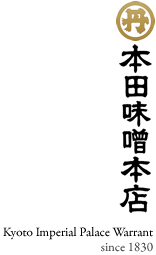Awaseru (To match)
Aesthetic sensitivity towards awase - the origin of play
The Heian period, a time in which Kyoto was the capital of Japan, was a time when the foundation for Japanese customs was established based on contemporary Tang-style culture. Beauty was created by using matching and layering techniques, seen clearly in the junihitoe (twelve-layered ceremonial robe), and this led to the creation of beautiful traditions and culture. This culture of matching was not just about matching colors and forms together but also about an
all-embracing matching of the colors, forms, and patterns of a particular theme, such as a season or a poem, into an exquisite whole.
Their enjoyment of this aesthetic of matching led the Japanese to incorporate it into games such as poetry matching, shell matching, and card matching. Awaseau, a word related to having a playful mind, appears to originate from the phrase “kamisama o asobaseru” (to leave the gods to play). In other words, the origin of play in Japan is said to be in leaving the gods to play and playing together with the gods in their way.
This relationship between gods and people developed gradually into a relationship between themselves (hosts and guests), and this brought hosts and guests together to create a fun atmosphere in which furnishings and food were tailored to the occasion. This activity came to be known as “motenasu” (to entertain).
This old concept of leaving the gods to play remains in polite Japanese words such as “asobase” and “asobashimasu”. The English word “coordinate” is currently popular in Japan, but it carries a meaning different from the Japanese word “awase”.


